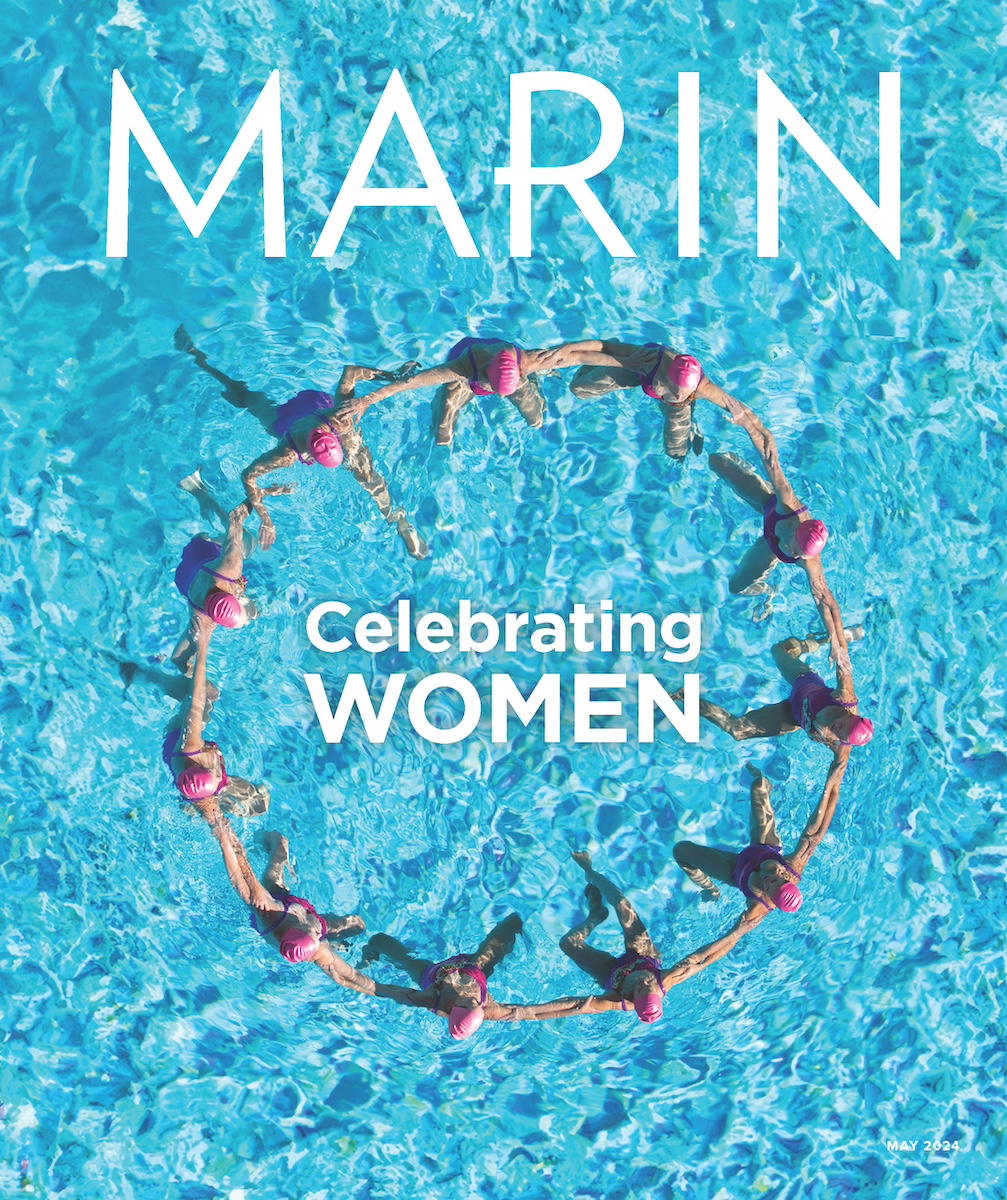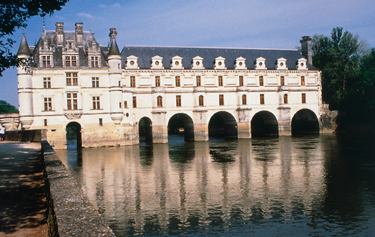Once the playground of French kings and queens, today the Loire Valley abounds with touristic diversions. Its sumptuous châteaux (palaces) welcome us. Their great forests, bucolic meadows and lovely gardens are open for our enjoyment.
Only a three-hour drive from Paris, the valley harbors a fabulously rich culture. Along a 40-mile stretch of the Loire River, between Orleans and Tours, four fascinating royal châteaux, Chambord, Blois, Chenonceau and Amboise, define the romance and nostalgic feel of this region.
Over the years I’ve explored this area a number of times. Like other visitors, I motor along or stroll, hike, or bike at my leisure. On the paved path near Orleans, my feet hardly pump the pedals of my rented electric bicycle as I survey the fast-flowing Loire River on my left and ancient stone walls, festooned with pink and red roses, on my right.
These modes of travel—driving, cycling and hiking—are pleasures in themselves, especially if one honors the contemporary mandate to pack light. In contrast, the monarchs of the 13th to 17th centuries traveled with all their belongings: clothing and linens in heavy wooden trunks, beds, chairs, tables, carpets, tapestries and the like. Indeed, King François I (who reigned 1515 to 1547), partial to elaborately embroidered clothing with large puffy sleeves, was always accompanied by his retinue of court nobles and servants—some 9,000 people in all—while shuttling between his great castles at Chambord, Blois and Amboise, among others. Each fortnight he moved the whole caboodle to a different château. This mobile court made the valley the capital of France.
 I spent my first night in Orleans—capital of France in the Middle Ages and the town where Joan of Arc withstood a siege by the English in 1429. The next morning I drove 25 miles west to Chambord. The first view of the château took my breath away. Conceived by François I, it contains 440 rooms, 13 flights of stairs (one in a double-helix shape), 70 sets of back stairs and—most striking of all—365 ornate chimneys poking skyward like a fantastic forest. It took 1,800 craftsmen 30 years to build the palace.
I spent my first night in Orleans—capital of France in the Middle Ages and the town where Joan of Arc withstood a siege by the English in 1429. The next morning I drove 25 miles west to Chambord. The first view of the château took my breath away. Conceived by François I, it contains 440 rooms, 13 flights of stairs (one in a double-helix shape), 70 sets of back stairs and—most striking of all—365 ornate chimneys poking skyward like a fantastic forest. It took 1,800 craftsmen 30 years to build the palace.
François aimed to impress and he succeeded. Chambord oozes royal power. A tour of the château and surrounding forests (13,600 acres) reveals amusing details of a royally quirky personality. François I adopted the salamander as his symbol and plastered his palaces with the amphibian’s image. The walls of one room in Chambord features 200 different salamanders in bas-relief.
The next day I motored on to Blois, a city replete with art and history only a few miles west of Chambord. The central courtyard of Blois Château has a remarkable outdoor statue in the likeness of Louis XII, who chose a porcupine as his symbol (it adorns the building’s façade). The building’s spiral staircase and four wings illustrate different architectural periods. From the same spot, with just swivels of my heels, I noted Gothic (a medieval fortress, 13th century), Flamboyant Gothic with elaborate decoration (Louis XII wing, 15th century), Italian Renaissance (François I wing, 16th century) and Classicism (Gaston d’Orleans, 17th century).
Strolling inside Blois’s mammoth interior, I was intrigued by these royal characters who built homes that have lasted centuries. One vignette in particular captured my fascination: in 1617, Louis XIII imprisoned his mother, Marie de Medicis, here. But she disguised herself as a laundrywoman, climbed down by rope into the moat, and swam away in a daring escape.
 From Blois, I drove to the hamlet of Suevres to spend a night in an 18th-century manor, Château de la Rue, where owner Madame de Caix served a dinner of delicious salmon and potato gratin. Afterward I drifted off to dreams of galloping behind Louis XII and François, both on thoroughbreds.
From Blois, I drove to the hamlet of Suevres to spend a night in an 18th-century manor, Château de la Rue, where owner Madame de Caix served a dinner of delicious salmon and potato gratin. Afterward I drifted off to dreams of galloping behind Louis XII and François, both on thoroughbreds.
Then I was off to Chenonceau, built over the Cher River and known as the most beautiful château in France. Chenonceau was a gift of love from Henri II to Diane de Poitiers, a court beauty and his favorite. Such is the role of seduction in history! When Henri was killed in 1559, his wife, Queen Catherine de Medicis, took revenge on Diane by kicking her out and moving in. The queen planted a garden to rival Diane’s, and today visitors can tour both exquisite gardens.
Image 2: Chambord Château of Francois I has 365 ornate chimneys and 440 rooms.
Image 3: French man with bread.
Indeed, the Loire Valley, blessed with fertile soil and amiable weather, is known as the birthplace of France’s gardens. In nearby Parc Arboretum des Grandes Bruyères, a 900-species garden with heather, roses and exotic shrubs, I heard the owner, Madame Rochefoucauld, say, “I had no idea what I was getting into when I began.” Yet today, at 75, she perseveres, gardening six hours a day, every day, and planting 200 trees a year from seedlings.
Next on my itinerary was Amboise, a town straddling the Loire River. Louis XI, Charles VIII, Louis XII and François I all added to Amboise Château, imprinting their grand styles on impressive bedrooms and salons furnished with exceptional Gothic and Renaissance pieces. Among the many wonderful meals I enjoyed on this trip, the filet de canard prepared by chef Ludovic Laurenty at Château de Pray in Amboise was especially outstanding. I stayed in the recently renovated 18th-century Le Manoir Les Minimes, with a view of the Loire River and Amboise Château from my bedroom window.
enjoyed on this trip, the filet de canard prepared by chef Ludovic Laurenty at Château de Pray in Amboise was especially outstanding. I stayed in the recently renovated 18th-century Le Manoir Les Minimes, with a view of the Loire River and Amboise Château from my bedroom window.
I ended the journey in Tours, former home of Louis XI and Saint Martin, ambling along elegant avenues and shady squares to a 13th-century Gothic cathedral that took 337 years to build. In Place de Plumereau, a onetime market square now awash with the gaily colored umbrellas of cafes and brasseries, I toasted my time in the playground of the kings with a glass of Chenin Blanc, the white wine of the Loire.
Image 4: View from Amboise Chateâu looking over the town of Amboise on the Loire River.
If You Go
GETTING AROUND: From Paris, the Loire Valley is two to three hours by car or 55 minutes by rapid TGV train. Renault Eurodrive offers a rental package for 17 days or more, with car pickup in Paris or Orleans. 888.532.1221, renaultusa.com. Electric bikes (190 miles of bike trails), Orleans Tourist Office, 02.38.24.05.05.
SITES: Chambord Château: chambord.org. Chenonceau Château, chenonceau.com. Events at Amboise, chateau-amboise.com. Château tours, loiredeschateaux.com. Passport Val de Loire, $30, entrance to 100 monuments, including some châteaus, monuments-nationaux.fr/en. List of 86 parks and gardens, jardins-de-france.com.
ACCOMMODATIONS: In Paris, the Hotel Lancaster is just off the Champs-Elysées, 800.223.6800, lhw.com/lancaster. In Amboise, Le Manoir Les Minimes Hotel, $100 to $475, manoirlesminimes.com. In Suevres, Château de la Rue, chateaudelarue.com.
RESTAURANTS: Restaurant du Grand Saint Benoît in Benoît-sur-Loire. La Tonnellerie Hotel and restaurant in Beaugency, tonelri.com. Château de Pray in Amboise. The tented bistro in Villandry gardens near Tours, chateauvillandry.com.
MORE INFORMATION: Loire Valley Tourist Board, visaloire.com. Touraine, tourism-touraine.com. French government tourist office, franceguide.com.


